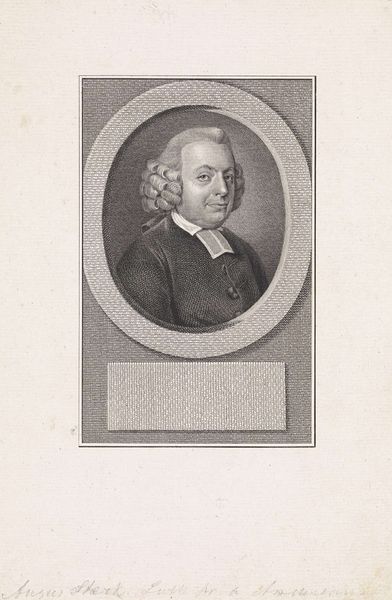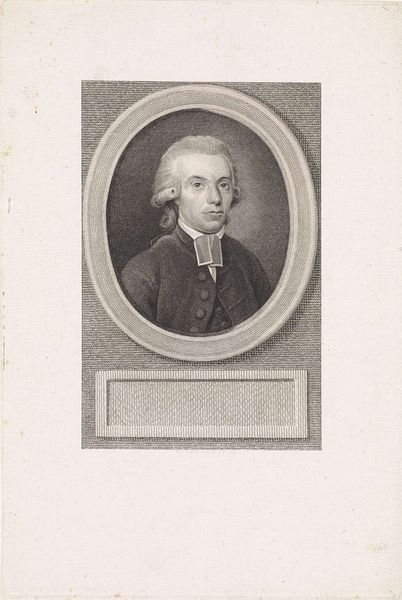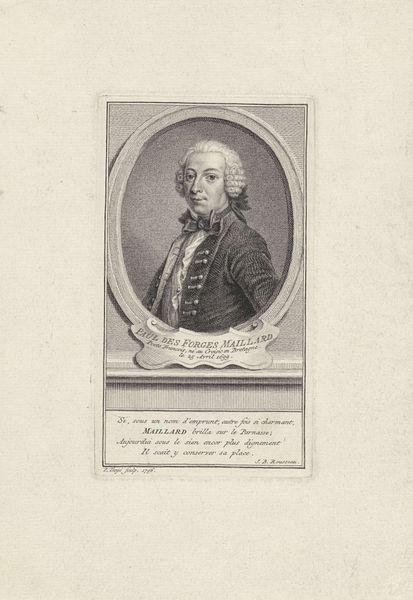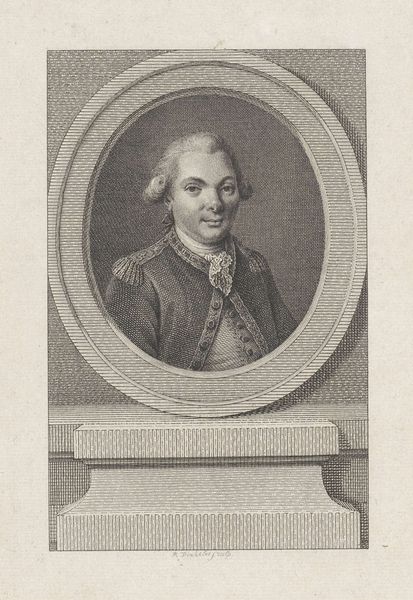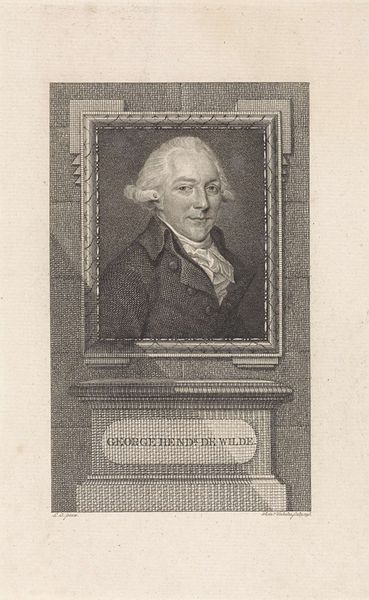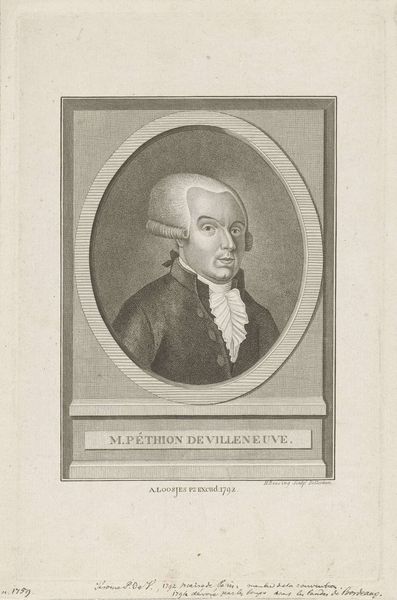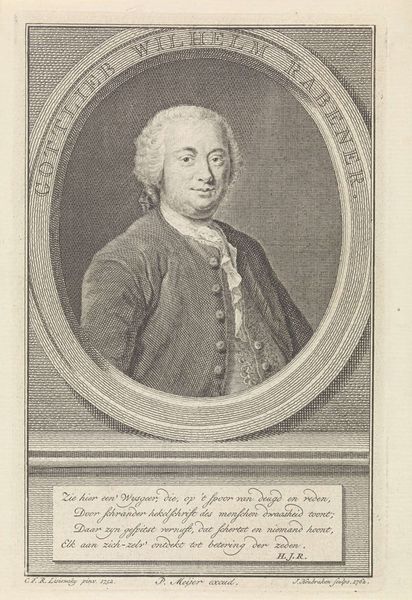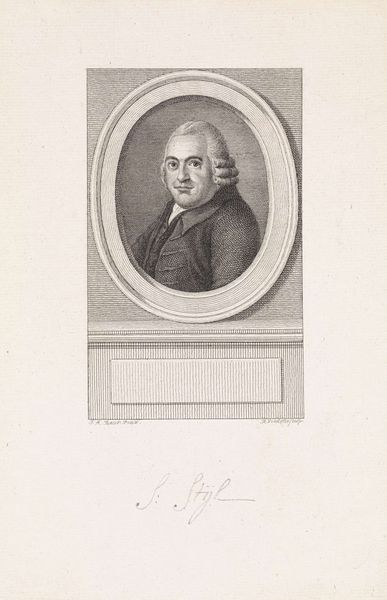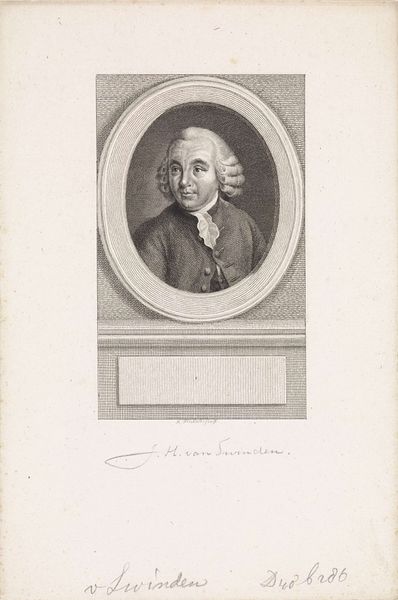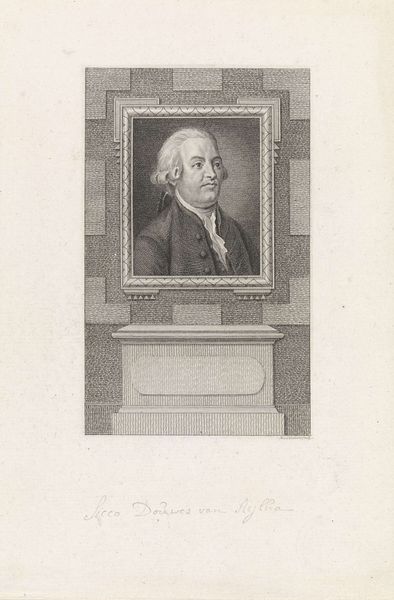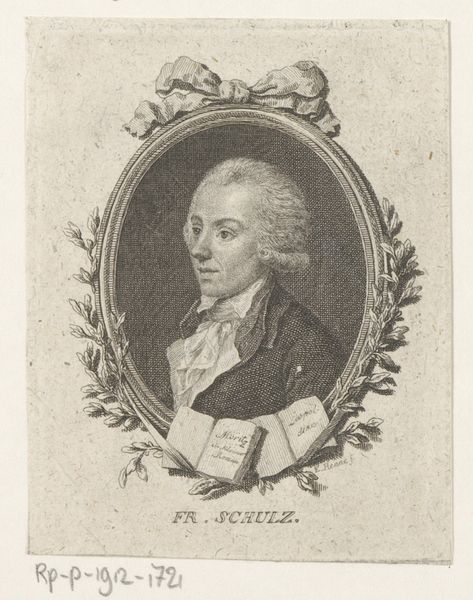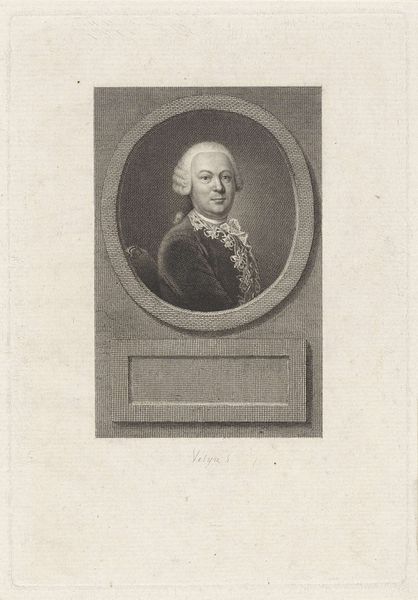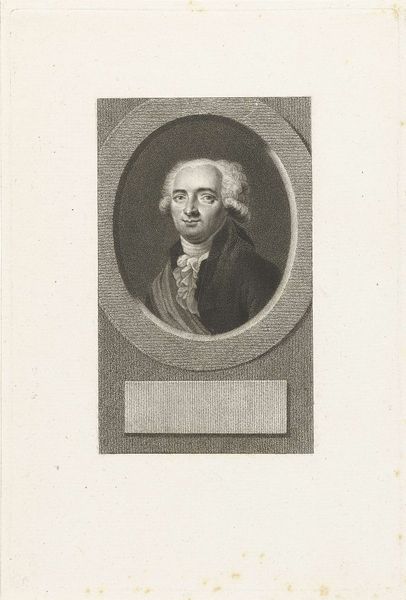
graphite, engraving
#
portrait
#
neoclacissism
#
graphite
#
graphite
#
engraving
Dimensions: height 242 mm, width 154 mm
Copyright: Rijks Museum: Open Domain
Curator: Good morning! Let's dive into this captivating portrait. Editor: Indeed. This is a print from somewhere between 1786 and 1809 entitled "Portret van Paulus Gevers," created by Reinier Vinkeles, residing in the Rijksmuseum's collection. The artist worked with graphite and engraving. There's something very formal, even severe, about the way he's presented within this very structured oval. What strikes you most about it? Curator: Well, placing this portrait within its historical context is essential. Notice the Neoclassical style, evident in the clean lines and the almost Roman-like austerity? This wasn't just about aesthetics; it reflected the Enlightenment values of reason and order, which were gaining momentum at the time. Consider how these values affected society, particularly those who occupied positions of power and wished to express such status through the arts. Does that formality you observe possibly convey an intentional message about the sitter's status and ideals? Editor: I hadn't considered it that way, but now that you mention it, the severe frame within a frame adds to the feeling of formality. So you are suggesting that Neoclassicism in portraiture became almost a tool to shape perception? Curator: Precisely! It was a way for individuals to align themselves with specific intellectual and political movements. Museums and galleries of the time were instrumental in promoting such imagery and shaping public opinion about ideal leaders and citizens. How do you think portraits like these contributed to building the image of individuals during this transformative period? Editor: That makes perfect sense. So it's not just about likeness, it's about constructing an identity and solidifying a socio-political position. Thanks, that adds a whole new layer to my understanding. Curator: You’re welcome. Considering the historical context truly enriches how we see the artwork!
Comments
No comments
Be the first to comment and join the conversation on the ultimate creative platform.
